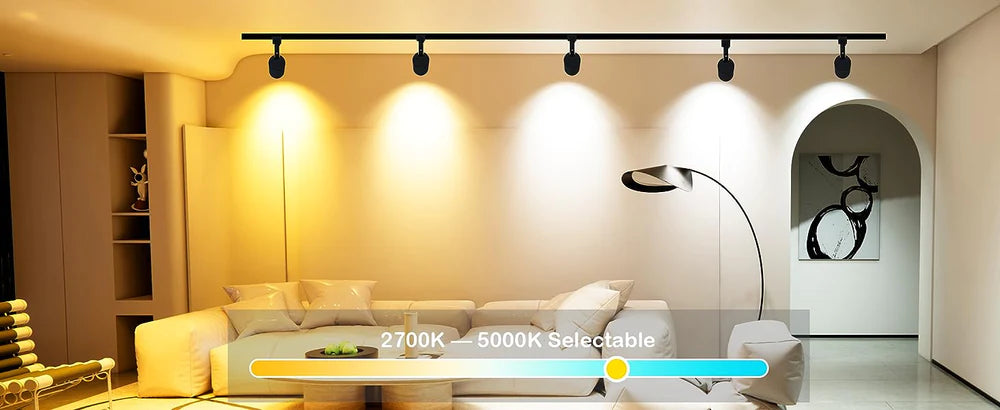Color temperature is the concept that describes the warmth or coolness of the light emitted by a source, and it has a profound impact on both mood and health. By scientifically adjusting the lighting environment, we can create spaces that contribute to overall well-being. This article delves into how color temperature plays a crucial role in our daily lives, providing practical insights to create the ideal lighting environment.
TABLE OF CONTENTS
- Understanding Color Temperature
- Effects on Circadian Rhythms
- Choosing the Right Color Temperature
- Impact on Productivity and Focus
- Creating a Relaxing Atmosphere
- Addressing Common Concerns
- Conclusion

Understanding Color Temperature
-
Explanation of the concept of color temperature:
Color temperature is a measure of the warmth or coolness of the light emitted by a source. It is expressed in units called "Kelvin" (K), where higher color temperatures lean towards a bluer light, and lower color temperatures exhibit warmer tones. This concept helps us understand the characteristics of light, crucial for creating various visual and emotional effects. -
The correlation between color temperature and the perceived warmth or coolness of light:
There is a close relationship between color temperature and our perception of light. Higher color temperatures (cool light) often evoke a sense of clarity and alertness, suitable for increasing focus, while lower color temperatures (warm light) create a cozy and relaxing atmosphere, ideal for soothing moods. Adjusting color temperature allows for the adaptation of lighting to different environmental needs and the creation of specific atmospheres.
Effects on Circadian Rhythms
- How color temperature influences our natural circadian rhythms: Color temperature has a profound impact on our circadian rhythms, especially our sleep-wake cycles. During the day, higher color temperature light (blue light) can enhance alertness, promote attention, and activity. In the evening, lower color temperature light (warm light) contributes to the release of melatonin, aiding in the process of falling asleep. By mimicking the natural changes in light, we can optimize activities and rest during different periods of the day.
- The role of lighting in regulating sleep-wake cycles and overall health: Lighting plays a crucial role in regulating sleep-wake cycles and overall health. Appropriate color temperature and brightness help maintain normal circadian rhythms, promoting good sleep quality. Conversely, improper lighting may disrupt circadian rhythms, leading to insomnia and other health issues. Therefore, adjusting lighting according to the needs of different times is essential to foster a healthy lifestyle.

Choosing the Right Color Temperature
- Factors to consider when selecting color temperature for different settings: When choosing color temperature, several key factors need consideration to ensure that the lighting is suitable for specific environments. The room's purpose, decorative style, and the intensity of natural light are crucial considerations. For instance, higher color temperature light is suitable for work areas, while lower color temperature light is more appropriate for comfortable relaxation zones.
- Adapting lighting to specific activities and times of day: Adjusting lighting for specific activities and different times of the day is crucial to ensure color temperature meets the requirements. Higher color temperature during the day can enhance alertness, making it suitable for work and study. Lower color temperature in the evening creates a warm and relaxing atmosphere, aiding in rest and sleep. Therefore, selecting the appropriate color temperature for different scenes and times helps create lighting environments that better suit specific needs.
Impact on Productivity and Focus
- How color temperature can enhance or hinder productivity and focus: Color temperature directly impacts our productivity and focus. In environments that require high levels of concentration, choosing a higher color temperature light source can increase alertness, stimulate mental agility, and foster creativity. However, in comfortable relaxation areas, lower color temperature light is more suitable for unwinding and reducing fatigue.
- Creating the ideal lighting environment for work, study, and concentration: Creating an ideal lighting environment is crucial for enhancing productivity, study, and focus on different tasks. In work areas, selecting bright and clear light with a higher color temperature contributes to maintaining alertness and efficient work. In study spaces or places requiring meditation, softer light with a lower color temperature can create a tranquil atmosphere, aiding in concentration.

Creating a Relaxing Atmosphere
- Utilizing warm color temperatures for relaxation and unwinding: In environments where relaxation is desired, opting for light sources with lower color temperatures is crucial. Such lighting creates a tranquil and cozy atmosphere, aiding in reducing tension and stress, promoting a soothing ambiance for both the mind and body.
- Enhancing the comfort and coziness of living spaces through thoughtful lighting: Thoughtful lighting design can enhance the comfort and coziness of living spaces. Choosing appropriate fixtures, light color temperatures, and brightness levels contribute to a homely atmosphere. For instance, using soft yellow light in the living room or creating a gentle warm ambiance in the bedroom enhances the quality of life, making people more inclined to unwind at home.

Addressing Common Concerns
- Addressing concerns about eye strain and discomfort: Many individuals may experience eye strain, especially with prolonged use of electronic devices or in inadequate lighting conditions. Selecting appropriate color temperature and brightness levels can alleviate eye strain. Taking regular breaks and adjusting lighting settings contribute to relieving discomfort.
- Balancing personal preferences with recommended color temperatures: Each person has unique preferences when it comes to lighting, so finding a balance between personal preferences and professional recommendations is essential. While some guidelines apply to most scenarios, adjusting lighting to meet individual preferences based on how one perceives and responds to light is crucial for a personalized and comfortable experience.

Conclusion
In conclusion, this exploration has provided valuable insights into the significant impact of color temperature on health and well-being. Choosing the right color temperature can enhance our quality of life and promote a healthier lifestyle. By adjusting lighting in different environments and times, we can create atmospheres that better suit our needs, making every moment more comfortable and enjoyable. I encourage readers to actively explore and experiment, discovering the beauty of light that best suits their preferences, and ultimately elevating their overall quality of life.




Share:
Best Practices for Setting Up Smart Lights
Exploring Smart Lighting for Business: Enhancing Workplace Efficiency and Comfort